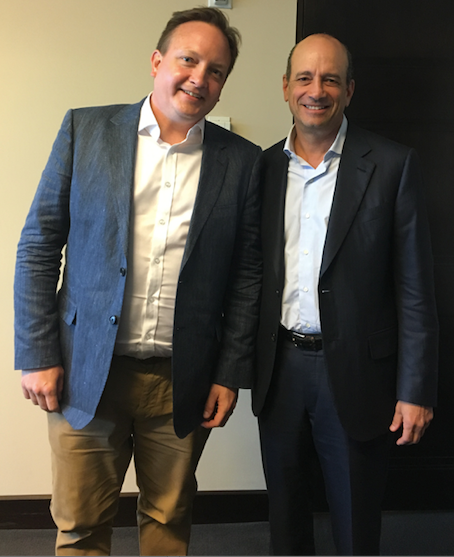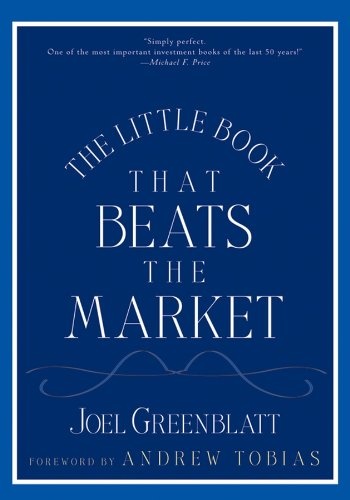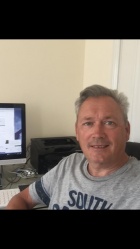There aren’t many Wall Street legends who command respect like Joel Greenblatt. After starting his money management firm, Gotham Capital in 1985, he and his business partner, Rob Goldstein, spent the next decade delivering returns that took Wall Street by storm.
Yet the nature of Greenblatt’s strategy meant long periods of super-high returns would be interrupted by spells of underperformance. For him, these periodic drawdowns were simply a mathematical consequence of running concentrated value portfolios. It was a philosophy inspired by his original investing hero, Ben Graham.
While Greenblatt was content to ride these waves with his own money, it was harder to do the same for others. So, in 1994, he wrapped up the first chapter of his investment career by returning Gotham’s outside capital.
In the years since, he and Goldstein have continued to pursue their strategy of buying good, cheap stocks and selling expensive junk. They’ve also built a suite of new long and long/short funds that are less volatile and once again opened the doors to external capital.
While Greenblatt’s investing skills have earned him superstar status, he has also spent his career sharing his expertise with individual investors everywhere.
In a series of books -- including the hugely popular ‘Little Book That Beats the Market’ -- he outlined an incredibly accessible and intuitive investment strategy based on his favoured principle of focusing on ‘good’ and ‘cheap’ stocks. He called it the Magic Formula, and it is arguably responsible for educating a generation of investors about how a blend of value and quality can be used to construct portfolios that outperform on average.

I met Joel Greenblatt at Gotham Asset Management’s offices in New York City first thing on a sunny Monday morning in June. We’d only agreed the precise details of the interview the previous Friday. Happily, he seemed to overlook being presented with a slightly flustered British guy and was thoughtful, funny and generous with his time...
As a college student, you were much more influenced by the work of Ben Graham than you were by the academic concepts around efficient markets. How did the way you think about investing begin to take shape at that time?
That's a good question. I would say it really took shape after my junior year, when I read an article in Forbes about Ben Graham’s stock-picking formulas. His view was that stocks are either too high or too low at various times, and that markets are somewhat emotional about it. That concept resonated with me immediately. If you looked in the newspaper at that time, there were 52-week high and low lists for pretty much every company. In each case, the high was double or triple the low, but it never made sense to me how that would be accurate and efficient at every point.
In general, I think academic study is about solving the hardest math problem, rather than discovering the most useful thought process to have. I had that epiphany when reading Ben Graham for the first time, and haven’t wavered in my opinion since then.
I started reading everything that Graham had written, which led me to Warren Buffett. At the same time, everything I was learning in school really made very little sense when I boiled it down, after I got done with the math. I almost immediately realized that, to me, the teachings of Graham and Buffett made sense, while everything I was learning in school made no sense.
It sounds like you made the decision early on that you were intent to start managing other people’s money as quickly as you could. What were the pivotal moments in those early days?
I always knew that I was going to work for myself. I saw what the working world was like and I didn't want to get paid by the hour, I wanted to get paid for my good ideas.
When I was in business school at Wharton, I ended up writing a paper with two of my good friends: Rich Pzena, who is a large value manager and whose board I sit on, and Bruce Newberg. We conducted a study together that actually updated Ben Graham's stock-picking methodology. It was published in The Journal of Portfolio Management and it was our Master's thesis. All this said, I was smitten with money management right away – I knew it was right for me and knew what I wanted to do after first reading Graham.
While you were quick to move into money management, you returned to teach investing classes at Columbia University in New York City. Why has that been so important to you?
From early on, I always wanted to write and teach. That said, I never expected a career in academia, I just thought it would be a fun avocation.
Then, after I returned our outside money at the end of 1994, I began co-teaching a class at Columbia. One of the things that appealed to me about that class in particular, was that it was called ‘Security Analysis,’ which is the class that Ben Graham taught when he was at Columbia, and the one that Warren Buffett took. Little did I know I would end up continuing to teach that class for five years. I went on to teach a 'Value and Special Situation Investing' course, which was part of a Value Investing program Columbia launched under Bruce Greenwald. I’ve been teaching ever since.
When you closed your original fund to investors in 1994, it marked the end of what was really the first chapter in your investing career. What led to that moment and what happened next?
When I got into this business, I was wired as a gambler and my partner, Rob Goldstein, who joined me in 1989, was wired the same. What is good about our partnership is that we are both cynical about businesses. We never did anything that one of us didn't like, and all of our investment decisions were mutual. That was a nice check and a nice discipline to have.
The other discipline we had was managing outside capital. In some sense there's a value to managing other people's money because there is more of a discipline involved. I think it’s good to run scared, and other people’s money helps you do that because you don’t want to lose it.
All in all, during those 10 years, we had success and I really enjoyed it. Before fees, we earned 50% a year returns (30% net of fees). We knew it wasn’t going to get much better than that. We thought we'd done well, and well is good enough.
Nevertheless, there were always periods every two or three years where there would be big downward draughts on the portfolio. One of Howard Marks’ best quotes is: “Experience is what you got when you didn't get what you wanted.” That was the attitude I had when I lost my own money. The draughts never bothered me, but they did bother me when I was managing other people's money.
By 1994, we had done well enough to keep our staff, return outside capital to investors and continue to run our own internal capital. I had felt that it was foolish to be doing what I loved, but not be having as good a time as I could. I was also beginning to grow a family and wanted to spend time with them. So all these things came together, and I just thought, “Why don't I set things up the way I'd like?”
The investors weren’t happy when I returned the money, but it just seemed like the right thing to do and I was very happy I did it.
An important feature of all this is that while you were hugely successful in your investing, you were also writing books about it, predominantly for individual investors. What led you to do that?
I had written the book 'You Can Be a Stock Market Genius' in 1997, which was really just a series of war stories from our first decade running money. In that book, I looked at the lessons we had learned and what we’d been thinking about at the time.
I had also just begun teaching when that book came out. I’d written it in a friendly style, but I had made some assumptions about what people knew about the market and investing. As soon as I walked into my first day at Columbia, I realised that I had really written it at an MBA level and that it wasn’t fully accessible to readers. Hedge fund managers thanked me for it, but that wasn’t my goal. Like Ben Graham, my goal had been to share what I knew for a broad audience. Unfortunately, I assumed that everyone already knew about the things I was discussing in the book.
Looking back, what led me to writing my books began with the research and testing that I’d done with my friends in college, which boiled down to figuring out what a stock was worth, buying it for a lot less and leaving a large margin of safety. It was what Ben Graham had done. Warren Buffett added a little twist that made him one of the richest people in the world. He said if he can buy a good business cheap, that’s even better. My friends and I had evolved much more towards buying good businesses cheaply.
So, in the same way that we had tested and updated Ben Graham’s work in college, in the early 2000s Rob and I started doing some more computer testing. We wanted to find a more sophisticated way of doing what I had been teaching my students and what Rob and I had been doing to make money over the years.
The very first thing that we tested -- a crude metric for “cheap” and a crude metric for “good” -- came out well. It was that very first test that I wrote about in ‘The Little Book That Beats the Market;’ I thought it was a great proof point that buying cheap, good businesses made sense over time. To be clear, it still wasn’t an easy ride, which I view as good, because if the formula worked every day and every month and every year, everyone would use it. But over time, the principles made sense. All in all, if you stuck to the formula over a period of time, you could do well.

When we did those first tests, I said: “Wow.” I finally felt I could explain my formula for stock picking very simply to people, and more importantly, that people would understand it. I was excited to write ‘The Little Book,’ and so, it just came out of me. I combined my years of teaching at Columbia and learning with the test, which demonstrated the basic principles worked, to write the book and share it. While it probably took only a year to write, it really took 20 years of thinking.
Apart from exploring the power of blending value and quality, what do you think the most important ideas in ‘The Little Book’ really are?
The great thing about the Magic Formula is that when you look over a large number of years, you can see that it worked quite well, yet also examine the pain that happened in that great period of performance.
I wrote another book, called ‘The Big Secret for the Small Investor’, and I'm always saying it's still a big secret because nobody bought it. In that book, I utilized a study of the best money managers for the decade 2000-2010 to examine who had the best ten-year record. Forty-seven percent -- so about half -- of those that ended the period with the best ten-year record, spent at least three of those 10 years in the bottom 10 percent of performance. The idea of the book was to explain simple principles that would carry one through the tough periods of time – the times when one may consider pulling their money rather than sticking it out and riding the losses in hopes of future gains.

I like to use the analogy of a house, where if you’re buying a house, and to keep the number simple, they’re asking a million dollars for the house and you have to figure out whether it’s a good deal or not. So there’s a few questions you’d probably ask. The first question you’d ask is, “well if I rented out this house, how much could I get for it?”
So that’s the first question we ask for a business, you know “how much cash flow, how much earnings am I going to get for this house relative to the total cost of the house including liabilities, whether liabilities are on balance sheet, off balance sheet, what’s my all in cost to buying this business? And what kind of cash flow am I going to get for it.” With the house, it’s “what’s the cost of the house, and how much annual cash flow can I get from it? How much could I rent it out for? “
What’s the next question you’d ask if you were buying a house? The next question you’d probably ask is “hey, what did the other houses on the block go for and the block next door and the town next door?” And that’s what we do. “How relatively cheap is this company relative to all our current choices?”
In the stock market, however, there are daily quotes and you're getting bombarded by constant news, which can be seen as challenging, but illustrate that the market is possible to beat.
You can take the view that other people don't have a time horizon, they don't have a home base and they don't have a true north. If you have a true north, though, and you can actually value businesses, or in the case of ‘The Little Book’, you know that on average you’re owning good, cheap businesses, that might help you push through. I wanted to share that idea with others.
The Magic Formula was really ahead of its time as a factor model that individual investors could understand and use when you first introduced it. Tell me about your personal approach to applying value and quality in the stock market?
The results in ‘The Little Book’ are based on what I call the ‘not trying very hard’ method. We took crude metrics, a crude database and used crude methods to put those measurements together -- and it worked incredibly well.
My partner Rob and I turned to each other and said, ‘You know what, we actually know how to value businesses. As opposed to the ‘not trying very hard’ method, we know how to try, so what if we did that?’ At the get go, there was no plan to take outside money, we were just going to develop something for ourselves, so the building of our business was really an evolution.
I’d say there’s less than one percent of people who are pretty good at valuing businesses and who are seeking to invest. That’s the truth. How we think about valuing businesses is that the value in businesses is the discounted value of future earnings. If you think of a discounted cash flow formula, and you move your discount rate one or two percent, and you move your growth rate one or two percent, you can double or half the value of a business.
Really what we're doing is looking for normalised earnings and whether the growth rate in a business is going to improve. What I always ask myself is, can you beat the risk-free rate? There's no point in investing if you can't beat the risk-free rate. And I use a high one. I think rates are below normal, so in my mind I use a 6 percent risk-free rate. I actually wrote that in the book and I still use it.
If I buy an equity, I have to believe it will beat a 6 percent risk-free rate. That doesn't mean that you can't buy something with an earnings yield of 5 percent, it just means that you better believe it’s growing over time in order to beat that 6 percent constant threshold.
So, gauntlet number one is that anything I buy should be expected to beat the risk-free rate. Once you get past that, what you're really doing is comparing companies against each other. What are the cheapest companies you can buy? You can compare two companies to say, does this one perform better than that one on these scores?
At Gotham, we’ve assembled a team of 13 researchers who have developed a sophisticated way of balancing risk that hopefully allows us to get to the long-term value with the least amount of pain. At the end of the day, it's really about putting together cheap and good portfolios. We manage both long-only and long/short portfolios. With the long/short, we use leverage, so we have to balance our risk. As a value investor, you can say: “Ah I'm down 30 percent, that's fine.” But if you use leverage and you go long/short, that's not fine! Instead, you must have a sophisticated way to balance the risk in your portfolios.
At Gotham, we have a seven-person tech team that supports that effort. Importantly, this team doesn’t know anything about investing, and we did that on purpose. We believe that makes them even more qualified to help us look at the kind of risk to take in our long/short portfolio, and figuring out good metrics. All in all, they’re crucial to helping us decide how much risk to take in a strategy based on how much leverage we have, how much exposure to the market we have, and whether our exposure is in large-cap equities or all-cap equities. It’s a fun project.
People ask me: “Why do you own hundreds of stocks on the long side and hundreds of stocks on the short side when you did pretty well with the methods in ‘You Can Be a Stock Market Genius’?”
The answer is that there's nothing wrong with what Rob and I did together for close to 20 years, and what I did for 28 years. There are just different ways to make money. The main difference for our investors is that on our “bad days,” we’re not losing 20-30 percent of our net worth. Instead, we may be underperforming by 20 or 30 basis points. While there is a clear difference between our past strategy and current strategy, I do not believe one is better than the other. Rather, one strategy is more appropriate for outside investors and the other is more appropriate for either managers themselves or for very sophisticated investors with a very long time frame, which in this investment world is very rare.
Given the discipline needed to execute a value strategy, and the need to take a long-term view, do you still think it’s a viable route for individual investors?
It’s certainly been a fascinating ride for me to learn how to take the principles I had used in concentrated portfolios and apply them on a more general basis. But that said, I think there’s a place for both strategies I’ve deployed. I still give some of my money to people who do what I used to do, and I teach my kids those same methods. One's not good, one's not bad, one's not better or worse. They are different ways of applying value principles for different types of risk profile.
I gave a talk at Google a little over a year ago where I mentioned that even Warren Buffett said most people should just index, and I said I agree with him. But then I said, “Hey, Warren Buffett doesn't index and neither do I -- how come!?”
If you have an ability to pick stocks, or understand what you're doing, which most people don't, there is an opportunity for long-term value investors. People are very emotional and that's never going to change. I always promise my students on the first day of class, that if they do good valuation work on a business, the market will agree with them, I just never tell them when. It could be a couple of weeks, it could be two or three years or sometimes longer. That's really the way to think about it.
If you have a home base, you can be very selective and pick only the companies you understand and are able to value, you just might have to do a lot of work to find a few names that are undervalued significantly enough to make you want to take that position. You have to be patient, but if you find one good idea every two or three months, you'll have a full portfolio after a little while.
So you think it’s important for investors to be really conscious of the extent of their capabilities, both in stock selection and their capacity to ride the rollercoaster of returns?
You know, Warren Buffett talks very appropriately about a circle of competence. You can learn over time what you're good at valuing and what you're not as good at valuing. I always say to my students: “What do you do if it's hard to figure out what the competition will be, whether the new products will work out or what the earnings will be in a few years? How do you approach that?" I always following up by saying: "Skip that one, and find one you can figure out." Buffett calls it 'one-foot hurdles,' and that's what I'm always looking for: easy ones.
I opened ‘You Can Be a Stock Market Genius’ with a story about my in-laws, who used to live in Connecticut and on the weekends would shop at antique sales and country auctions. If they found a painting, they didn’t say: "Hey, is this guy going to be the next Picasso?" They wouldn’t ask that because that's a really hard question to answer. What they asked is: “Hey, did a similar painting by the same artist just go up for auction at three times this price at Sotheby's, and can I now get it for one third?” That's a much easier task, and that's sort of the way I look at investing. Look for the easy ones.
Joel, thank you very much for your time.
If you'd like to find out more about Stockopedia and the strategies used by investors like Joel Greenblatt, you can visit our community here, and explore our strategy screens here.









